Contemporary cannabis culture is a dynamic and multifaceted phenomenon that transcends borders and continues to evolve as legalisation spreads worldwide. In this article, we’re breaking down the five most vibrant cannabis scenes in influential countries, exploring their traditions, festivals, and practices related to cannabis and its influence. From the iconic coffee shops in the Netherlands to the sacred rituals of India, these nations offer unique insights into the world of cannabis and how it’s continuously shaping cultures all over the world every day.
1. The Netherlands: Coffee Shop Cannabis Culture
The number one place most people think of when it comes to a culture wholly intertwined with cannabis is The Netherlands. It all began in the 1970s when the Dutch government began noticing a rise in drug-related crimes. They needed to face the challenge of drug abuse and social disparities, so in 1976, they decriminalised cannabis as a radical response to such issues.
The Dutch Model and Modern Cannabis Strains
They enacted a policy called “gedoogbeleid,”— better known as the “Dutch model.” More or less, it decriminalised cannabis and fostered an environment that made it possible for hundreds of “coffee shops” to spring up in Amsterdam and throughout the Netherlands. People were able to use it comfortably without fear of persecution, so long as locals followed the rules.
With the cannabis laws working well for the country, more and more progressive thinking took place. In 2000, the Netherlands decriminalised other soft drugs and prostitution— and the Red Light District, the area in Amsterdam that houses hundreds of coffee shops and brothels— was born into what we know today. The Red Light District brings in countless tourists every year. Here, tourists can partake in several vices without fear of prosecution as long as they behave.
As a result of the lax laws, Dutch growers and strain researchers in the Netherlands are responsible for many of the strains you can find on the shelves at your favourite dispensary or on the menu at an Amsterdam coffee shop. Dutch breeders were responsible for several iconic strains you can find globally, like Jack Herer, White Widow, Northern Lights, and Haze varieties. The Netherlands is also home to some of the largest cannabis seed banks, including Barney’s Farm, Serious Seeds, Greenhouse Seeds, Dutch Passion, DNA Genetics, and Sensi Seeds.
Cannabis Coffee Shop Tourism
But it doesn’t stop there. Cannabis and the Red Light District in the Netherlands offered a lot more than just research and recreation for the locals. Its decriminalisation became one of the prime economic drivers for the region— and brought in millions of tourists. Weed lovers worldwide had a bucket list dream of heading to Amsterdam to experience the coffee shop culture firsthand, especially if they hail from areas where cannabis is condemned.
The allure of legal and accessible cannabis, along with the city’s scenic canals and historic sites, has made it a prime destination for cannabis lovers worldwide. Coffee shops in the Netherlands were like a safe house or a speakeasy— and they have been dominating cannabis tourism for over 40 years.
Dutch coffee shops are not your typical cafes; they are licensed establishments where patrons can legally purchase and consume small amounts of cannabis within the confines of the shop. These shops offer a wide array of cannabis strains and products, normally in the form of dime bags and pre-rolled joints. Some also sell edibles, but licensing for those shops is different, and edibles may also be found at liquor stores.
The variety and quality of cannabis available make these coffee shops a haven for average local enthusiasts and tourists alike. In fact, cannabis tourism generated roughly 2.5 billion euros annually in Amsterdam alone.
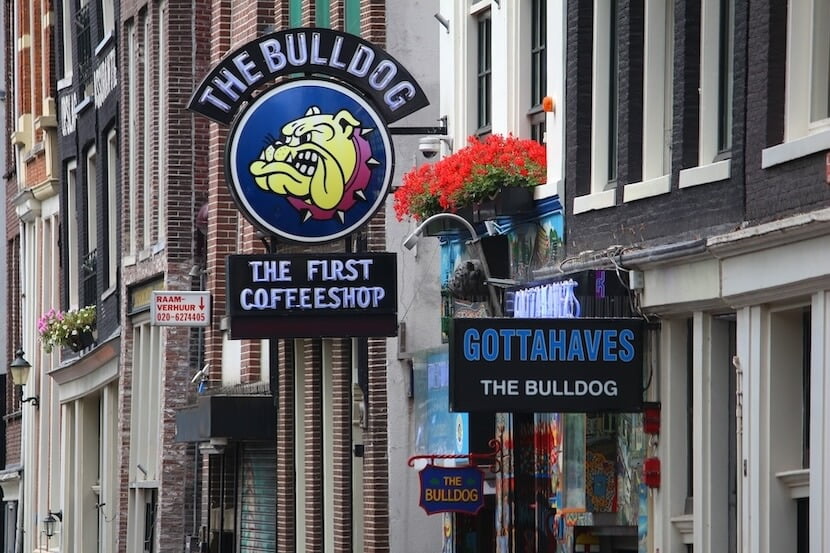
Challenges in the Netherlands
However, things are changing. Amsterdam mayor, Femke Halsema has confided in the media that cannabis tourism is doing more harm than good for the city. Crime, public intoxication, and other social issues have been on the rise as tourists flood the city. Authorities face new challenges, like money laundering, extortion, and human trafficking, in the Red Light district.
The city is looking into enacting policies that would ban tourists from visiting the coffee shops. New rules are already in place, making it so that liquor stores and bars in tourist areas must close earlier and limit their sales— and fine tourists who disobey the law and smoke cannabis in public.
As Amsterdam cracks down on cannabis tourism, it may cause a ripple effect throughout the world. Tourism experts expect that places like Thailand, South Africa, Uruguay, Jamaica, Malta, Mexico, Canada, and the United States may be able to pick up the tourists who can no longer make their way to the Netherlands for cannabis.
However, even as the Netherlands enters a new chapter with cannabis, its influence is poignant. As such a long-standing cannabis hot spot, countries who are only just now decriminalising or legalising cannabis can use the Netherlands as a case study for what to expect and how to solve different issues, like poorly behaved tourists and taking a balanced approach to decriminalisation and integration.
The Netherlands is a remarkable example of a country where cannabis has been deeply integrated into the culture, tourism, and economy while navigating the complexities of international drug treaties and changing domestic policies. Its coffee shop culture continues to shape the global perception of cannabis and its potential regulation.
2. Morocco: Illicit Cannabis Cultivation in the Rif Mountains
Cannabis has been a key player in Morocco for hundreds of years. Researchers believe that cannabis was initially brought to the country by Arab conquerors as early as the 10th century. The plants grow beautifully here, thanks to the climate. With the plants growing all over the countryside, Morocco is, to this day, one of the largest producers of hash in the world.
The problem is cannabis is still prohibited in parts of Morocco and has been illegal since 1974. Growing, using, or selling it can land a person in prison— whether you’re a resident or just a tourist who didn’t know any better. Regardless of legal status, cannabis still entered the cultural fundamentals of parts of Morocco. For generations, cannabis has been grown in the rugged Rif mountains, often hidden amidst the remote terrain.
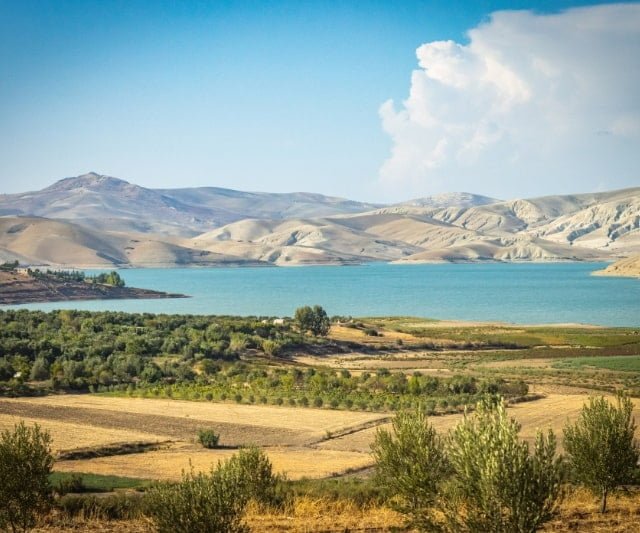
The Wrong Solution for the Right Reasons
The Rif Mountain region in Morocco is one of the poorest in the country. To compensate, people in the area have utilised cannabis and artisanal hash as a cash crop and leveraged it as a life-sustaining necessity. While cannabis cultivation, use, and sale are illegal in Morocco, they are the lifeblood of many communities in the Rif Mountains. Cannabis provides a livelihood for thousands of families, helping them sustain themselves despite the legal risks involved.
Through the generations, families have developed traditional methods for growing and harvesting cannabis, preserving the integrity of the plant’s genetics and ensuring its quality. While these small village farmers and cannabis-plantation drug barons are operating outside the law’s confines, their culture is still relevant. These practices have been passed down, and fathers teach sons to make kif— a combination of cannabis and tobacco— and pressed cannabis resin, known as hash. In this area, these are seen as artisanal products that have been refined through the years— and they fetch a high price.
It’s common to see large plantations of cannabis in this area, as the families that live here have sustained themselves with it for generations. Many villagers rely on cannabis farming as their primary source of income, as alternatives are limited, thanks to the region’s remoteness and terrain. As time went on, families made a living alongside cannabis, passing down the knowledge and skills needed to cultivate and process the plant and bring it to market.
And that’s where the trouble starts. The illegal cannabis trade in the Rif has spread through Morocco and other countries. Bringing their product to market often involves illegally exporting it to surrounding countries. Growers in the Rif face run-ins with law enforcement efforts, both domestic and international, which have led to many arrests and seizures. The legal implications can be severe, with penalties for cannabis-related offences ranging from fines to imprisonment.
To overcome some of these challenges, the Kingdom of Morocco approved a bill to legalise cannabis for industrial, medicinal, and cosmetic use in the three provinces of the Rif back in 2021. However, locals are slow to embrace the new ideas.
The Road to Regulation
With these regulations come many challenges. The farmers’ livelihoods in the Rif would be overseen by the National Regulation Agency for Cannabis Activities (ANRAC), for starters. Many farms and families here are concerned that the policies are not designed to help but to hinder. Some speculate they’d lose their income and fortunes as the government decides how much cannabis is worth in this area.
It’s an outlaw culture, but a culture nonetheless. The lack of regulation means the industry operates in the shadows, making implementing sustainable and environmentally responsible farming practices difficult. Despite the economic reliance on cannabis by villagers in the Rif, prohibition poses serious challenges to these communities. Increased law enforcement activities can lead to conflict, displacement, and economic instability. Yet many villagers find that law enforcement doesn’t bother much with their affairs.
At the end of the day, only time will tell if the culture in the Rif will shift as the area and the generational cannabis farmers within it slowly adopt the new policies enacted by the kingdom. The complex interplay between cultural tradition, economic necessity, and legal constraints offers a unique perspective on the global cannabis landscape. It underscores the need for a nuanced approach to cannabis policy that considers the realities and livelihoods of different people while addressing the concerns of international drug control agreements.
3. Jamaica: Rastafarianism, Reggae, and Ganja
Jamaica is another country that people from all over the world tend to connect to cannabis. This stereotype comes from the widespread practice of Rastafarianism and all the influential figures that came with it. Between Rasta, reggae, and the “sacred herb” itself, as far as cultures go, Jamaica embraces it wholeheartedly.
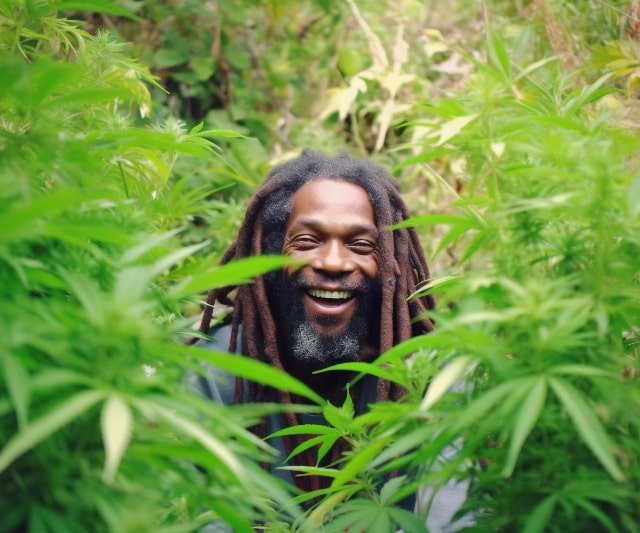
It starts back in the 1930s. Rastafarianism emerged as a response to the historical oppression of Jamaicans of African descent, rooted in centuries of African diaspora and colonialism. Influenced by Marcus Garvey’s teachings of black pride and the return to Africa, Rastafarians saw the crowning of Haile Selassie I as Emperor of Ethiopia in 1930 as the fulfilment of a divine prophecy.
They believed Selassie to be the messiah (Jah) and the reincarnation of Jesus Christ. This movement, which incorporated cultural elements such as reggae music, dreadlocks, and the sacramental use of cannabis, provided a source of identity, empowerment, and resistance against colonial forces, contributing to a rich and enduring cultural legacy that extends far beyond the Caribbean.
The Rastafarian Faith and Sacramental Cannabis
In Jamaica, Rastafarianism also has a deep connection with cannabis. Rastafarians believe that cannabis, which they call “ganja,” is a sacrament that aids in spiritual enlightenment and facilitates communication with the divine. Within the Rastafarian faith, cannabis plays a central role in rituals and ceremonies, such as the “Reasoning Sessions,” where faithful people gather to chant, pray, sing, and discuss earthly and philosophical matters within the community while sharing a communal cannabis sacrament.
Rastafarians believe in social consciousness and unity and brought these messages along with their cannabis culture to the masses in the form of reggae music by the 1970s. Reggae music, characterised by its distinctive beats and lyrics promoting social consciousness and unity, has been a powerful force in promoting cannabis and culture in Jamaica and around the world. Iconic reggae musicians like Bob Marley, Peter Tosh, and Bunny Wailer openly championed ganja in their music and lifestyles. Bob Marley’s songs, in particular, such as “Legalise It” (banned in 1975) and “Kaya,” became anthems advocating for cannabis legalisation on a global scale in places far away from the island.
The Ganja Law
But there was a lot of cannabis history taking place before the Rastafarian movement. At one point, cannabis in Jamaica wasn’t just illegal but heavily punished. As upper-class folks and the evangelical church complained, the government went on a mission to try and completely eradicate cannabis on the island. By 1913, acres upon acres of fields were burnt, and countless people were imprisoned and given heavy fines for mere possession. The 1913 Ganja Law explicitly prohibited the cultivation, use, and sale of marijuana.
As the years passed, pressure from locals and the international community led to talks about change, opening up discussions about Jamaica’s cannabis tourism potential. In 2015, amendments were made to decriminalise possession in specific quantities (fewer than two ounces or 57 grams) and to accommodate Rastafarian needs, granting them the use of cannabis for worship and the ability to grow up to five personal plants.
This change paved the way for Jamaica’s cannabis tourism. However, the history of legal options for buying cannabis in Jamaica is relatively new, with strict regulations in place for licensing dispensaries. As a result, the black market still plays a huge role in supply and demand. Locals continue to engage in the trade, selling cannabis from various sources, and you’ll find it readily available in places like cabs, buses, and beaches, alongside the legal dispensaries you can now shop at on the island.
A Modern Connection to Cannabis
These days, Jamaica hosts several contemporary Rasta festivals and celebrations that revolve around cannabis, reggae music, and the omnipotent message of unity. Events like Carnival and Stepping High attract both locals and tourists, offering a unique opportunity to immerse themselves in Rastafarian culture and enjoy the communal use of cannabis in a festive and spiritual context. While it’s still not legal for tourists or residents to smoke weed in public places, it does happen. These gatherings often feature music, dance, and discussions on Rasta beliefs and the significance of ganja.
Cannabis holds significant cultural relevance in Jamaica for its residents and the millions of tourists visiting the island each year. For Jamaicans, ganja is not just a plant; it is deeply woven into the fabric of their daily lives, traditions, and spirituality. Its cultural importance extends beyond the Rastafarian community, symbolising unity and resistance against historical oppression.
Jamaica’s unique blend of Rastafarianism, reggae music, and cannabis culture has contributed to its global image as a hub for cannabis lovers and those seeking a spiritual connection with the plant. It’s a place where the cultural significance of cannabis is not only celebrated but also deeply ingrained in the identity of the nation.
4. India: Cannabis, Bhang, and Sacred Traditions
In the heart of India’s rich cultural story lies a deep-rooted connection with cannabis that spans centuries. This multifaceted relationship encompasses not only the historical use of cannabis for medicinal purposes but also its profound role in religious and cultural practices.
Some of the earliest records of cannabis use date back to ancient India. It’s been a part of India’s pharmacological heritage since ancient times, as evident in texts like the Vedas, which date back to somewhere around 1500–1200 BCE. The Vedas refer directly to the consumption of cannabis as a means to connect with the divine.
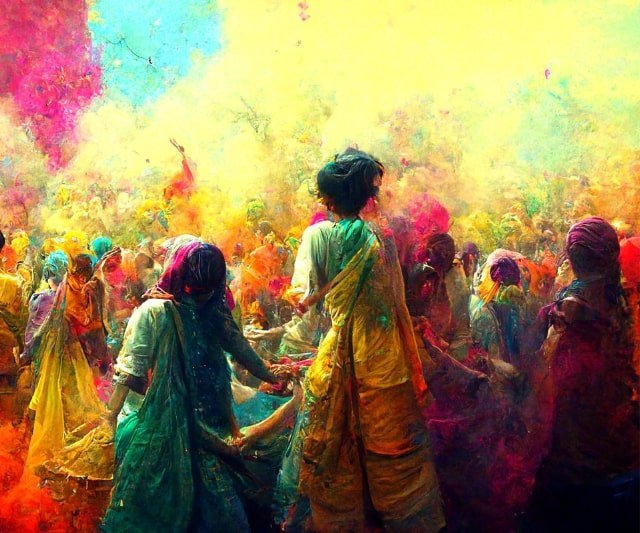
Cannabis as Ancient Ayurvedic Medicine
Further, cannabis is mentioned as one of the five sacred plants in the Ayurveda, which is the ancient Indian medical system. These ancient writings take a natural and holistic approach to physical and mental health and are one of the oldest medical systems in the world. It’s also still a traditional figure in modern Indian healthcare.
Ayurvedic medicine recognises the versatile uses of cannabis. From destroying phlegm and expelling flatulence to sharpening memory and enhancing appetite, cannabis played a role in numerous Ayurvedic treatments. By the 13th century, it was even considered a cure for leprosy and a source of joy that vanquished anxiety.
However, the Ayurvedic texts draw a clear distinction between medicinal and recreational cannabis use. While some support its medical use, they emphasise that it should only be administered in controlled quantities as part of a treatment program. Recreational intoxication, which is strictly forbidden in mainstream Hinduism, is discouraged.
The Relationship Between Hinduism and Cannabis Culture
However, there are certain sects of the Hindu faith that have a close relationship with cannabis. It is inextricably linked to the worship of Lord Shiva, one of the principal deities in Hinduism. Within the diverse landscape of Hinduism, various sects and holy men, known as sadhus, have incorporated cannabis into their spiritual rituals. Among them, the Aghori sect is renowned for its unconventional practices involving cannibalism and cannabis as a means to transcend.
Lord Shiva’s depiction often includes the consumption of cannabis, which is believed to aid in deep meditation and spiritual connection. These traditions have deep historical roots, with references to cannabis in Hindu scriptures and rituals dating back centuries. While Hinduism encompasses diverse beliefs and practices, for devotees of Lord Shiva, cannabis is seen as a means to emulate his spiritual practices and attain enlightenment.
The use of cannabis in these contexts is not recreational but rather a tool for achieving profound spiritual experiences and a deeper connection with the divine. Devotees contend that consuming cannabis enables them to transcend the material world and attain heightened consciousness, facilitating a direct connection with the divine. In the pursuit of spiritual enlightenment, cannabis serves as a conduit.
However, its acceptance and interpretation can vary widely among Hindus. Many people practising Hinduism are vehemently against cannabis. Further, legal and cultural tensions may surround its use in modern India. While it is generally illegal for recreational use, there are exceptions for specific religious and traditional practices. The primary law governing cannabis in India is the Narcotic Drugs and Psychotropic Substances Act of 1985, which made it illegal. However, like the U.S., individual states also have their own regulations regarding the possession, sale, and use of cannabis.
Generally, the possession of cannabis is considered a criminal offence in India. But some states, like Odisha, allow the sale and use of Bhang, a religious sacrament, within their territory, and Uttarakhand has permitted the commercial cultivation of hemp. But that brings us to our next point.
The Significance of Bhang in Modern Celebrations
“Bhang,” which includes cannabis flowers and leaves, is openly consumed in India on religious occasions and is not considered part of the prohibited cannabis plant. Made from milk, cannabis paste, and other spices, it’s often consumed as a milkshake or beverage during annual festivals like Holi and Maha Shivaratri.
During these celebrations, Bhang becomes a communal elixir, fostering euphoria and a sense of togetherness among participants. It’s also a religious sacrament when celebrating Hindu festivals related to Lord Shiva. Furthermore, Bhang is considered to have medicinal properties in Ayurvedic medicine, and its use during these festivals is thought to have a cooling and refreshing effect on the body, which can be especially beneficial during the hot seasons when these festivals are typically celebrated in India.
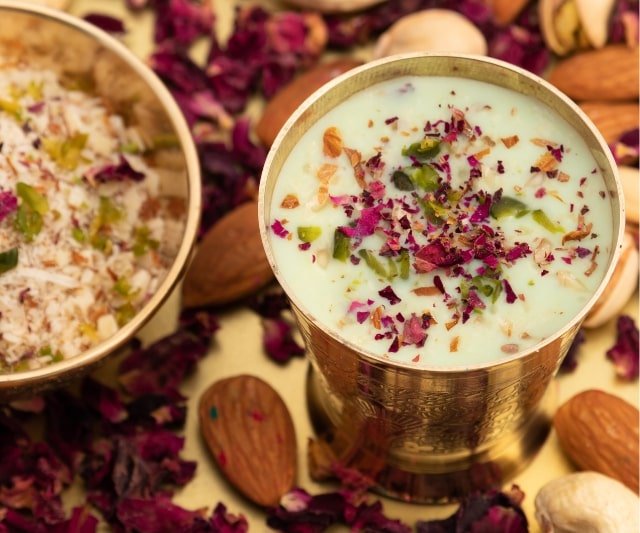
Despite the legal status of cannabis in modern India, millions of people still use it for both religious and recreational purposes. Bhang shops continue to serve cannabis beverages prepared from ancient Ayurvedic recipes, blurring the lines between medicine, spirituality, and intoxication—a testament to the enduring power of tradition in the face of evolving laws.
In the face of legal challenges and shifting regulations, traditional cannabis festivals and practices persist in India. These celebrations remain a source of spiritual enrichment and cultural significance for those who continue to partake, carrying forward centuries-old traditions that bridge the spiritual and temporal realms.
India’s enduring connection with cannabis transcends generations and legal restrictions, offering a glimpse into the intricate interplay of spirituality, tradition, and the evolving legal landscape. As India grapples with the modernisation of its cannabis regulations, these ancient practices continue to be a testament to the enduring power of culture and spirituality.
5. USA: Cannabis Festivals and 420 Celebrations
As a melting pot, you can catch glimpses of cannabis cultures from around the world within the United States. With so many different types of people from all over the map and a history rich in cannabis, it’s easy to see why. But where does it all come from?
Cannabis found its way to the United States through Caribbean sailors, the African slave trade, creole immigrants, and Mexican citizens fleeing the violence of the Mexican Revolution. While it was initially used for both recreation and as a cash crop in southern states, its actual impact on American culture was yet to be realised.
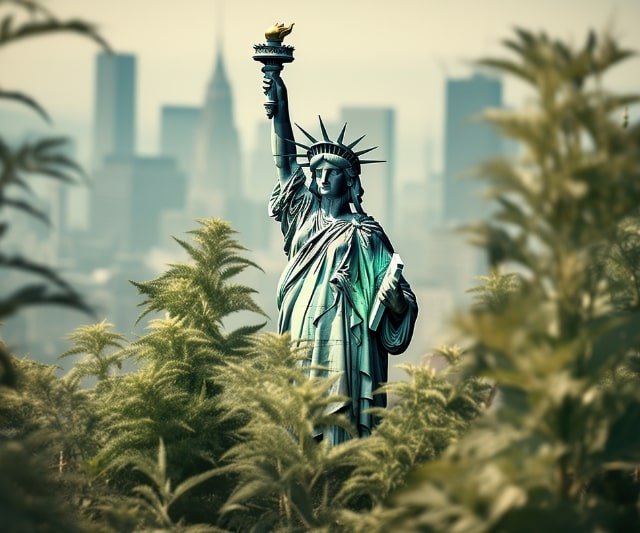
In 1893, the World’s Fair in Chicago brought nations together to showcase their achievements, including agricultural prowess. Kentucky, a U.S. state, proudly displayed hemp as a versatile and valuable crop, underscoring its numerous industrial uses. This event marked a significant moment in the history of American cannabis, with pounds of hemp seeds sold to farmers from all corners of the country.
1930s Anti-Cannabis Propaganda Led to Prohibition in the 1970s
But things changed as time went on and politics shifted. After a failed campaign against alcohol in the 1920s, lawmakers switched their sights to cannabis. Harry Anslinger, who was head of the U.S. Treasury Department’s Federal Bureau of Narcotics during the presidencies of Hoover, Roosevelt, Truman, Eisenhower, and Kennedy until 1962, positioned cannabis as a dangerous drug and used it to push racist rhetoric.
He claimed that cannabis made black people “forget their place” in society and tied it to Jazz and swing music, which were almost purely black American forms of music— with satanism, violence, and inter-race mixing. It didn’t stop there, either. Hindu immigrants were also seen as undesirables, and governments feared that the cannabis they brought with them would spread into white communities.
Unfortunately, this campaign continued into the 1970s, when the government was trying to slow the hippie movement. It was officially named a Schedule I substance, on the same level as cocaine and heroin, with the Controlled Substance Act of 1970.
That didn’t stop people from enjoying it, though. Like alcohol during Prohibition, which bred speakeasies and an illegal market through creative loopholes, cannabis took the same turn. People were growing it and using it illegally. By the end of the century, the United States was on pace with places like The Netherlands regarding innovative underground strain development.
The Birth of “420”
One of the most culturally significant moments is the birth of 420. The term “420” is an integral part of cannabis culture and is often associated with the time of day (4:20 PM) when many smokers partake. Its origin is sometimes attributed to a group of California high school students known as the “Waldos” in the early 1970s.
420 was a meeting time, where the students would meet at 4:20 in front of the Louis Pasteur statue in front of their high school to join up and head out on a search for a secret cannabis crop allegedly grown in the nearby woods. The Waldos were also connected to the Grateful Dead, which helped spread cannabis use and culture worldwide. In 1990, a group of Grateful Dead fans in Oakland, California, passed out flyers inviting people to smoke “420” on April 20th at 4:20 PM.
Between the hippie movement and the countless illegal cannabis growing operations within the country, cannabis culture has always been a counterculture. Activists and politicians are still fighting for the federal government to legalise cannabis, or at the very least, decriminalise it— which is inherently a part of the culture in America, considering the lengths ordinary people will go to avoid laws they disagree with, demonstrated with the alcohol prohibition.
The U.S. is Still Fighting for Freedom
But unfortunately, progress is slow, so many states leverage their own power to create local cannabis policies. Today, 24 states have fully legalised cannabis, and 15 have legal medical marijuana programs.
However, it remains illegal in 12 states. Interestingly, as legal and illegal markets coexist between state lines, there’s a unique culture on the rise. In states where cannabis is fully legal, there has been a notable decrease in the black market. However, people from fully illegal states often travel to legal states to purchase cannabis and then transport it back to sell illegally in their home states, highlighting the complex interplay between legal and illegal markets.
History lesson aside, all of the factors that brought us to the present have impacted cannabis culture in the United States deeply. Social issues have arisen, noting an underlying systemic problem of years of propaganda playing a role in a disproportionate amount of arrests for cannabis convictions based on race, as well as legal barriers making it extremely difficult for people with prior cannabis convictions to make their way into the legal cannabis market— perpetuating the black market.
But as state-by-state legalisation gains traction, activism and full-fledged embrace are taking place. Each state has the unique opportunity to capitalise on cannabis for tourism and reduce the social disparities brought on by prohibition in the first place. It’s also fueled a cultural shift that has normalised the use and enjoyment of cannabis.
In states where cannabis has been legalised, there has been a surge in cannabis-related events and festivals. The “Cannabis Cup” is a prime example. Though it started in Amsterdam in 1988, the U.S. has its fair share of events. These events feature competitions for the best strains and products from all over the world, educational sessions, and a vibrant marketplace for weed lovers. These events provide a platform for industry professionals and consumers to come together, fostering innovation and camaraderie within the cannabis community in the U.S. and abroad.
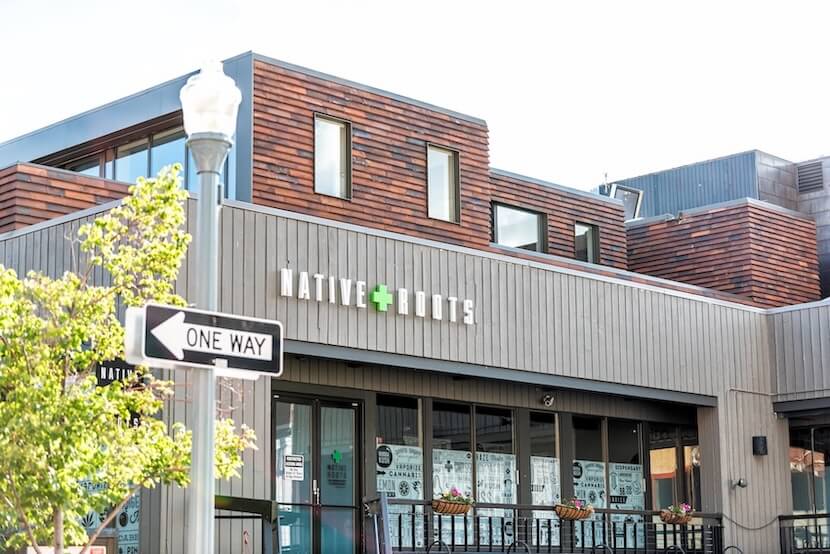
The Evolution of Cannabis in Mainstream Culture
Over the years, there has been a significant shift in the cultural acceptance of cannabis in the USA as well. While there was a time when cannabis was only a countercultural thing, it’s becoming a symbolic part of American history and its spirit to defend its freedoms. As more states have legalised cannabis for medical and recreational use, public opinion has evolved, and more people than ever are enjoying cannabis in the United States.
It’s also become a part of mainstream culture. For example, numerous celebrities have capitalised on the growing acceptance of cannabis by launching their own weed brands. Icons like Willie Nelson and Mike Tyson have ventured into the industry, lending their names and expertise to create cannabis products that resonate with their fans, who have been cannabis lovers, users, and activists as long as the figures themselves.
It’s in the music, too. While cannabis has been a central theme in many genres of music worldwide, it’s a key figure at music festivals like Rolling Loud, which has become synonymous with cannabis use, regardless of legal status. Pop culture in the form of movies, T.V. shows, and music with cannabis themes have contributed to the normalisation of cannabis use in American society. From stoner comedies to hip-hop tracks, cannabis has been portrayed in various forms of media, shaping perceptions and attitudes.
At the end of the day, cannabis culture in the United States is a vibrant tapestry woven from various historical threads. The convergence of these historical factors and all of the cannabis has profoundly impacted cannabis culture in the United States. Once outlawed, it’s being welcomed back with open arms for its economic, social, and agricultural prowess. The long fight for cannabis is a symbol of the American determination to secure liberties and preserve freedoms.
While systemic issues and legal barriers persist, activism and acceptance are rising nationwide. Cannabis culture in the USA is in a state of dynamic transformation, and as more states explore cannabis reform, the cultural impact and acceptance of this plant are expected to continue growing, reshaping American society’s relationship with cannabis.
Final Thoughts
At the end of the day, we have explored the contemporary cultural aspects of cannabis in five diverse countries: the Netherlands, Morocco, Jamaica, the United States, and India. Each nation has its unique relationship with cannabis, shaped by historical, religious, and social factors.
The Netherlands stands out for its pioneering approach to cannabis tolerance, where the famous Dutch coffee shops provide a space for responsible adult consumption. Morocco’s Rif Mountains shed light on the illicit cultivation of cannabis as a way of life, while also highlighting the economic significance it holds for local communities. Jamaica’s Rastafarianism has incorporated cannabis into religious rituals and cultural festivals, showcasing its influence on reggae music and its cultural relevance for residents and tourists alike.
In the United States, we witnessed the evolution of cannabis culture from prohibition to widespread acceptance, marked by cannabis festivals, celebrity endorsements, and its integration into mainstream media. Finally, India’s centuries-old tradition of using Bhang in religious and cultural celebrations underlines its deep-rooted connection with the Hindu faith and Ayurvedic medicine.
The diversity of practices we’ve explored, from religious ceremonies to festivals, illustrates the multifaceted nature of cannabis culture and how observing these practices may influence attitudes in other countries. As the world becomes more globalised, the exchange of cultural ideas and practices will likely lead to further shifts in the perception of cannabis.
Looking ahead, future trends in cannabis culture will continue to evolve as more countries consider legalisation and decriminalisation. Responsible integration of cannabis into societies worldwide will be essential to ensure that its potential benefits are harnessed while addressing potential risks. As cannabis culture adapts to changing times, its rich history and global significance remind us of the need for careful consideration and the perpetual sharing of ideas to ensure new policies encompass people from all walks of life.




Leave a Reply